In the Footsteps of a 7th Century Saint
By Tara Walker-Rose
A fabulous part of my job at Mickledore is walking the routes to get to know them, visit our accommodations, and share my experience with you. Last summer I chose St Cuthberts Way, a 62 mile walk from Melrose in the Scottish Borders to the Holy Island of Lindisfarne, which celebrates St Cuthberts life.
Day 1: Melrose to Harestanes
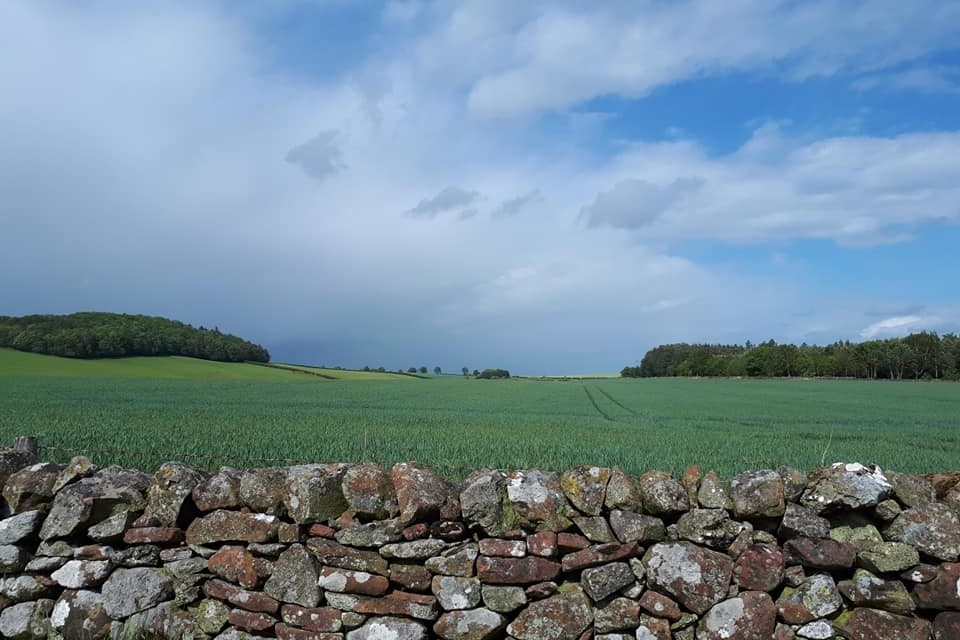
Today’s walk started at Melrose Abbey and quickly climbed out of town and on to the Eildon Hills.
The official route is between two of the hills but we decided to take a short side excursion to the top of Eildon Mid Hill to see the view from the top before rejoining the path.
After the open hills, much of the walking in the first half of the day is on woodland path. The route meets the River Tweed at Dryburgh, coming away from the river bank just to pass through St Boswells, then rejoins the river again. We had lovely views of fishermen, herons, swifts and swallows hunting insects over the water, a red kite, goldfinches, bullfinches, yellowhammers and lots of ducks with fluffy ducklings in tow. The river banks were covered in wildflowers, it was really pretty.
After leaving the river the Way joined a track following the line of Dere Street, the old Roman road. This track was a combination of field edges and woodland path and it took us all the way to the point where we diverted to our finish for today, Harestanes Visitor Centre. We don’t have accommodation in Harestanes so a pre-arranged taxi took us to Jedburgh for tonight’s lovely stay in a Georgian house.
In total we walked 17 miles today. Tomorrow will seem short in comparison at just 11 miles from Harestanes to Morebattle.
Day 2: Harestanes to Morebattle
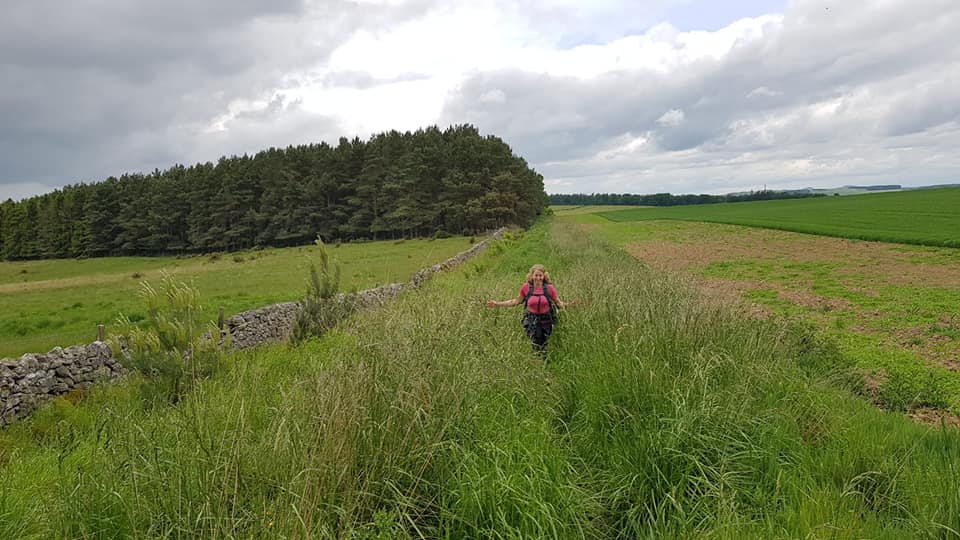
Today’s weather forecast said it would rain all afternoon but we were lucky, we had a quick rain shower and that was it. The waterproofs stayed in the rucksacks for the rest of the day.
The day started in the Monteviot Estate on lovely trails lined with rhododendrons and azaleas all in flower. It was a day of more riverside and attractive woodland paths. We didn’t pass through any villages on the way, just farms and the odd cottage. The most notable settlement was Cessford on account of its castle, right on the trail. The castle was designed to withstand regular assaults and was attacked by English forces four times. It’s just a ruin now but worth a visit.
Soon after Cessford we joined a road taking us to Morebattle and our Inn for the evening. Today we walked 11 miles.
Day 3: Morebattle to Kirk Yetholm
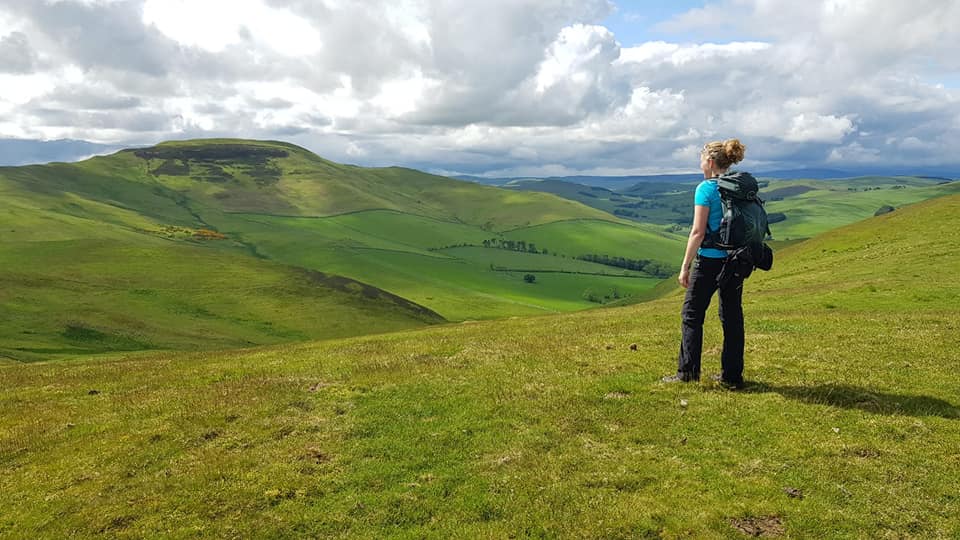
Day 3 was a shorter day at 6.5 miles but it included the biggest climb of the week, so it was slower going, and the earlier arrival at the destination allowed me time to visit another of our accommodations. It’s also a good opportunity to visit nearby Kelso by bus but unfortunately I didn’t have time to do both.
We started the day with a road section, which I’m not usually a fan of, but this was a quiet road with great scenery taking us to the foot of the climb. We followed well marked tracks through fields then onto open hillside up Wideopen Hill, the highest point on the Way at 368m and the approximate halfway point. The sun was out and the views were far-reaching, ahead to the Cheviots and back to the villages and the Eildon Hills from day 1. I think this section was my favourite part of the walk so far.
The route then travels over Crookedshaw Hill and descends steadily into the Bowmont Valley then along the road and through some fields towards Yetholm. Yetholm has an association with gypsies going back as far as 1695 and for many years they gathered here to elect a King and Queen and hold a coronation. By the beginning of the 20th century the way of life was dying out with many settling into the local community. The tradition is kept alive with the annual election of a male and female to preside over the celebrations of Yetholm’s Civic Week. Today the church was preparing for this event and we were invited in to look around.
Day 4: Kirk Yetholm to Wooler
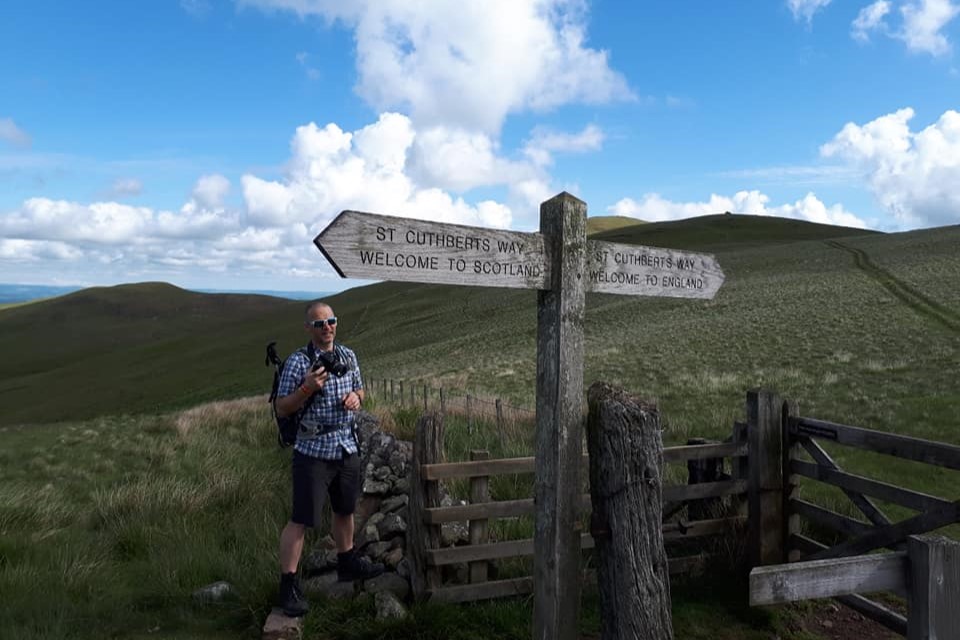
Once again we started the day with a road walk, this time taking us a mile out of the village towards the Halterburn Valley. The route here is shared with the final section of the Pennine Way which ends in Kirk Yetholm. We followed a track climbing the hillside on to the border ridge where we met the twin signs signalling the border between England and Scotland, and finally waved goodbye to the Scottish section of the route.
From here it’s rolling hillside track for a while then we headed downhill to meet a farm lane running alongside Elsdon Burn to Hethpool, a small collection of houses and cottages. A mainly level walk followed for a short while before a short steep climb into the northern Cheviot Hills. In our usual fashion we did make a small detour from the Way and headed up Yeavering Bell. It’s to the left of the path but a trail leads from the Way to the top of this hillfort, Northumberland’s largest at 13 acres. From here we rejoined the Way, now moorland with extensive views, before descending into Wooler, the largest settlement in the Cheviot Hills and our home for the night. 15 miles walked in total.
Day 5: Wooler to Fenwick
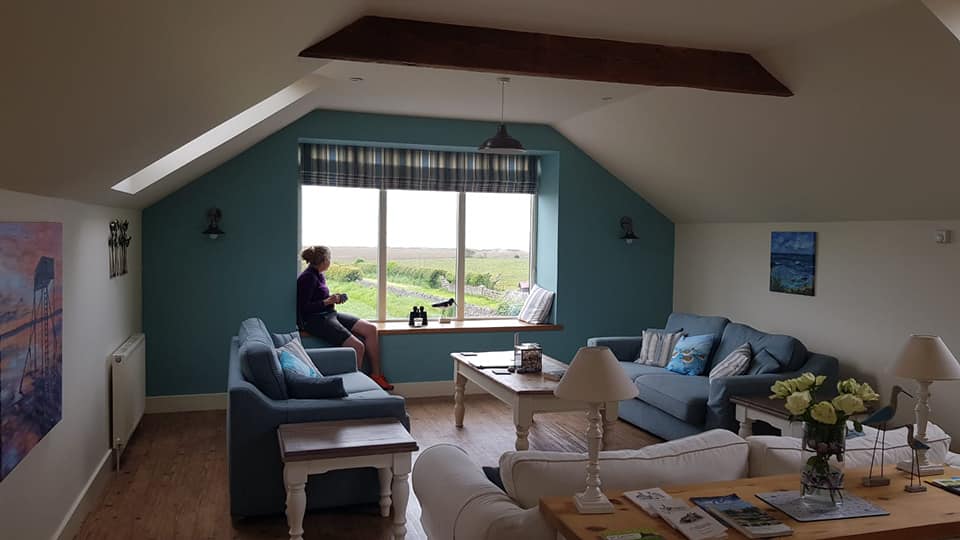
The sun shone again for most of the day which began with a short road section out to a footpath leading to the top of Weetwood Moor. After crossing the moor the trail dropped down to cross the River Till by way of the Weetwood Bridge, dating from the 16th century. There was a road section from here, part of which follows the course of the Devils Causeway, a Roman road linking Corbridge with Tweedmouth. Towards the end of the road section is a recent addition to the path, a statue of St Cuthbert carved from the trunk of a lime tree.
We were making good progress at this point, so in order not to arrive too early at our destination we had a little side excursion up a footpath leading to some interesting looking rocks, for a lunch stop. From here we had an early first glimpse of Holy Island, usually it’s not seen until later on this section.
We rejoined the path and headed into the woods containing the famous St Cuthbert’s Cave, said to be one of the places where monks hid his body during the Viking raids of 875AD. His body was carried around northern England for 8 years in all and finally ended up in Durham Cathedral.
Soon after the cave was the official first sighting of the coast and Holy Island, then it was a mixture of woodland, fields and road to Fenwick and on to our lovely accommodation this evening overlooking the island. We walked 15 miles in total. Tomorrow we will be walking the Pilgrims route over the sands to Holy Island when the tide allows.
Day 6: Fenwick to the Holy Island of Lindisfarne
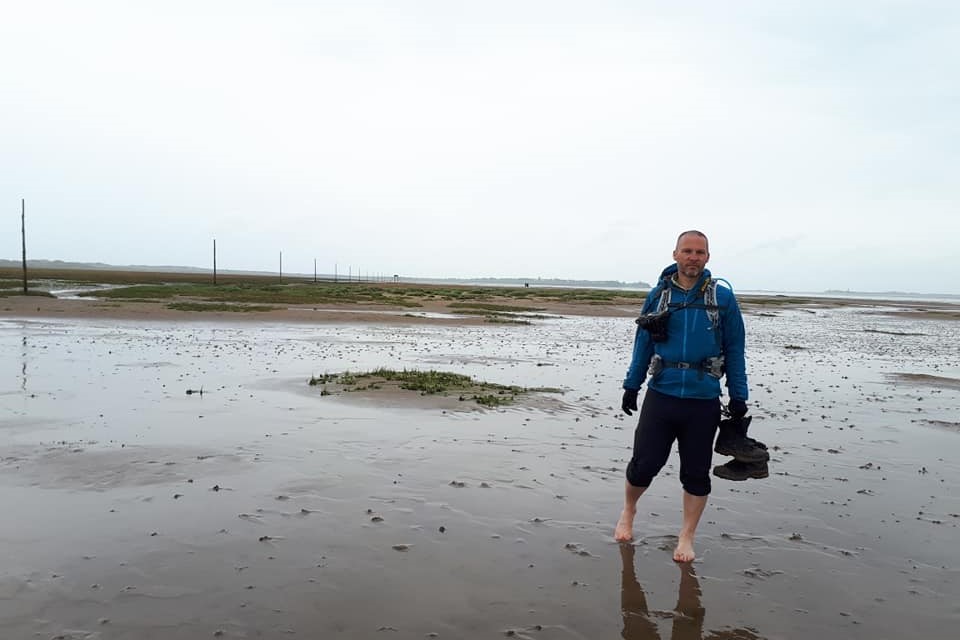
All week the weather forecast has been telling us that our walk to Holy Island was not going to be the most pleasant. However, the crossing wasn’t possible until after 10am and by then the rain had stopped and it was just a bit breezy. We wanted to walk the Pilgrims route over the sands rather than taking the road across the causeway, after all there was no road in Cuthbert’s time! After a short walk through fields from Fenwick to the start of the crossing, past an excitable welcoming committee of young cattle, we removed our boots and socks and went for it.
The Pilgrim’s route is just over 2 miles long and is marked with posts all the way across. Some of it is sand, some is mud, lots of it squishes up between your toes, some of it is very slippery and most of it was under an inch or so of water. Very cold water! However, it’s a great way to finish the walk and nice to not have boots on.
When we reached the island we explored the northern part first, through the dunes to the other side, and were lucky enough to see a colony of seals on a rocky outcrop. We had a walk around the Priory, Lindisfarne Castle (built in 1550 from stones looted from the Priory), and the Victorian limekilns.
I hope you’ve all enjoyed my cross border journey from Scotland into England and onto the Holy Island of Lindisfarne as much as I have. I’ve really enjoyed following in the footsteps of the 7th century Saint. It’s a terrific adventure that I highly recommend to you. For more information on St Cuthbert’s Way email us [email protected]. or to speak with one of our walking holiday experts, call 017687 72335.